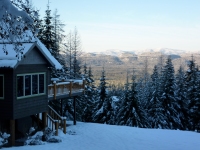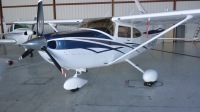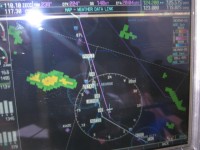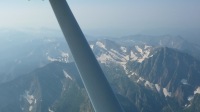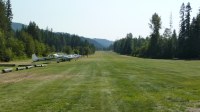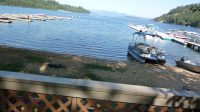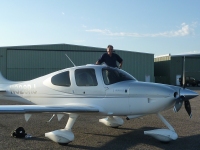I believe a famous quote goes something like “these are the times that try men’s souls”.
Two days ago, June 3, was a day that “tried my flying soul” and at the end of the day, provided me a result that I hadn’t experienced before in my flying endeavors:
A flight test UNSATISFACTORY. An OOPS.
I had scheduled the Practical Test for my CFI-I add-on rating that I’d been training for and I’ve discussed in earlier posts. The oral portion of the test began at 9:00 AM and ended at 2:40 PM. The Designated Pilot Examiner (DPE), Candace C., an experienced international corporate turbine captain, conducted the ground portion professionally and thoroughly. More of a discussion to determine my knowledge as an Instrument Instructor applicant, than “here’s a question, give me an answer” method. Although, lengthy and stressful, the oral was successful and when over, I had gained additional knowledge and insight from Candace’s interaction. I believe that’s the desired result of a professional certification exam, in any field – not only to see what the candidate knows, but to impart some additional knowledge to the candidate during the testing .
The flight test of the practical exam followed the ground portion. The flight portion consists of a number of required exercises that the applicant must complete to a satisfactory level of performance. The DPE has very little leeway on the conduct of the flight – the FAA Practical Test Standard spells out specifically the requirements and to what tolerances the applicant must satisfactorily perform, in flying, airspace/instrument knowledge, ATC communications and instructional ability. In order to “pass” the Practical exam, both the ground (oral) and the flight portion must receive a satisfactory grade from the DPE.
The flight portion began with Candace “flying” in the role of an instrument student preparing for the instrument rating practical exam. My role was the instrument instructor. We departed Palomar-Carlsbad Airport (KCRQ) on an instrument clearance to the Oceanside Airport (KOKB) a short distance away. After the hand-off from tower to SOCAL departure, I requested a non-precision instrument approach procedure, the VOR-A, into Oceanside. This was the scenario Candace had outlined previously on the ground to begin our flight test. The VOR-A requires a course reversal when arriving at the OCN VOR from the direction of KCRQ in the form of a holding pattern. Candace had previously instructed me that we were to request a “hold”, not just a course reversal at the VOR, and then, when ready, exit the hold and begin the instrument approach. See the IAP chart below.
All initially went well as I instructed and Candace flew to the OCN VOR and entered the racetrack pattern hold. SOCAL had kept us higher than the altitude depicted on the approach chart for the hold due to traffic below us, so as we flew the hold, SOCAL also began descending us to the initial approach altitude.
You may recall from previous posts, that my training and this flight was in a Cessna 172S with the G1000 avionics system. One of the technology gotchas with G1000 navigation is when entering a holding pattern, waypoint sequencing must be disabled by pressing the OBS soft key on the Primary Flight Display. Then, when ready to begin the approach and fly beyond the holding fix, waypoint sequencing must be reestablished by again pressing the OBS button. For whatever reason, this was my OOPS! Candace, as the instrument student flying the airplane into the hold, did not disable waypoint sequencing and I, as the instructor, didn’t catch that omission.
As we arrived inbound at the OCN VOR, which is the final approach fix for this approach, and turned outbound to continue in the racetrack holding pattern, the G1000 system, because waypoint sequencing hadn’t been disabled, sequenced to the final approach leg into the Oceanside Airport. As we flew inbound to the VOR/FAF the second time, it became obvious that I, as the instructor, hadn’t caught that error and was unsure of our aircraft’s GPS position relative to the VOR as the FAF. I will always recall the moment when Candace asked -“where are we”? I knew mentally where we were relative to the FAF (correctly), but the G1000 GPS was displaying a different position. At this point Candace could only reluctantly say that my performance was “unsatisfactory” and the flight test portion of the Practical Test was failed.
Obtaining my pilot ratings over the years – Private, Commercial, Multi-Engine, Instrument and Certificated Flight Instructor – Airplane, I had never received an unsatisfactory performance following a practical test. However, this practical test for the CFI-I, did “try my flying soul”, and the disappointment and disbelief will take a while to get over. I can truthfully say, that never again will I forget or fail to notice a student not disabling waypoint sequencing with the OBS soft key when required!

